The Modern Community of Bryn Gweled
From among the founders of Bryn Gweled Homesteads in Southampton, Pennsylvania, one would hear different stories of its beginnings. According to one version, in the late 1930s three couples associated with Bedford Center (a Quaker settlement house in a densely populated Philadelphia neighborhood just south of South Street) originally thought that they needed a get-away place in the country, perhaps an old farmhouse.
Their expectations were upgraded when they learned that one of their colleagues had an acquaintance who worked with Ralph Borsodi, a visionary in the movement for rural subsistence living. One weekend in October 1939, the three families visited Borsodi’s School of Living in Suffern, New York. Borsodi said he could help them start a rural cooperative community for homesteading in the Philadelphia area. Homesteading and growing one’s own food were especially attractive in these late Depression years.
Full of enthusiasm, that Sunday night the three families returned to Philadelphia and wanted to start building their modified vision of a homesteading community—not just a get-away place—right away.
They contacted friends who might be interested. A couple of other clusters of families had also been talking about something similar and joined the group.
During the winter of 1939–1940 the families met every Sunday night. They discussed incorporating and started a serious search for land, focusing on hilly Bucks County. In December they learned that the 240-acre Read estate in Southampton was available for $18,000, or $75 per acre. A growing number of families were interested in joining, but, sensing a need for quick action due to another potential purchaser, they stopped at 13 families and moved ahead. They incorporated on May 14, 1940. Needing a name for their community, at the suggestion of one of their members, they chose Bryn Gweled Homesteads (BG for short), which means “Hill of Vision” in Welsh—a name that reflected their strong sense of purpose as well as the topography.
Identity
All but three of the 26 signers of the articles of incorporation were members of the Religious Society of Friends. They came from several monthly meetings, in particular Germantown and Frankford in Philadelphia and Haddonfield in New Jersey. Some of the founders new to Friends joined Middletown Meeting in Bucks County, Pennsylvania.
The nascent community chose deliberately not to identify as Quaker. In fact, the bylaws explicitly state that the members are to enjoy “absolute freedom of religion, politics, association, expression, production, and exchange,”and furthermore, enjoy this freedom in “an atmosphere where families of any race or creed or beliefs . . . may live fully.” These were very unusual provisions for the time, especially regarding race.
Why did Bryn Gweled choose not to identify as Quaker, despite almost all of the founders being Friends? Part of the explanation is certainly that one enthusiastic couple at the group’s center from the beginning was not Quaker. More significant may be that there was great diversity among those who were Friends. Some came from families that were embedded in Quakerism for generations, but others were brand-new, convinced Friends. These latter founders had no real depth of commitment or loyalty to, for instance, Friends decision-making practice of searching for the “sense of the meeting” without voting.
Thus it was that the new community adopted the practice of taking votes. Yet the style of Bryn Gweled business meetings became one of minimal rigidity, avoiding the intricacies of Robert’s Rules of Order in favor of an inclination to avoid close votes, often holding out for a greater level of agreement before acting.
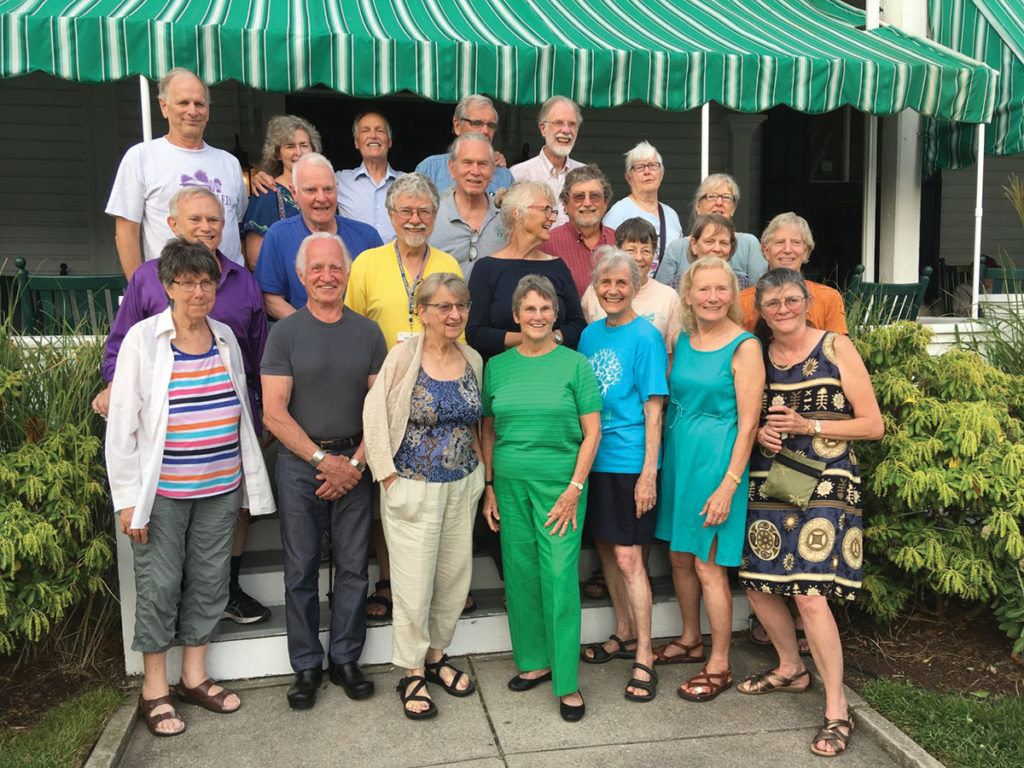
A 2019 reunion in Cape May, N.J., of children who grew up in Bryn Gweled in the 1940s, along with some spouses. The author is wearing yellow.
A Monthly Meeting Forms Nearby
Meanwhile, a Friends meeting did evolve near Bryn Gweled. Within a few months of the first family’s move to the Homesteads in October 1941, the outbreak of war and gas rationing led many Friends to meet for worship in one or another of their living rooms rather than travel to meetinghouses across town. Influenced by this experience, several families joined together in 1947 to found Southampton Meeting. They purchased a one-room schoolhouse, which had become a saloon, on Gravel Hill Road adjacent to Bryn Gweled.
New members transferred into the meeting from both sides of the schism between Orthodox and Hicksite Friends. From the start, they insisted on acceptance as a “united” meeting by the two contending yearly meetings, refusing to be confined to one side or the other of the split. They became a healing influence and helped to nudge the two sides back together. The split between the yearly meetings was reconciled in 1955.
A wide diversity in matters of faith also distinguished Southampton Meeting. The Friends drawn to the creation of Bryn Gweled ranged from Christ-centered to nontheist. Gathering exercises and singing from Friends hymnals preceded the unprogrammed weekly meetings for worship.
Meanwhile, as Bryn Gweled filled up gradually over the decades, the percentage of Quakers in the community declined and now constitutes less than a tenth of the membership.
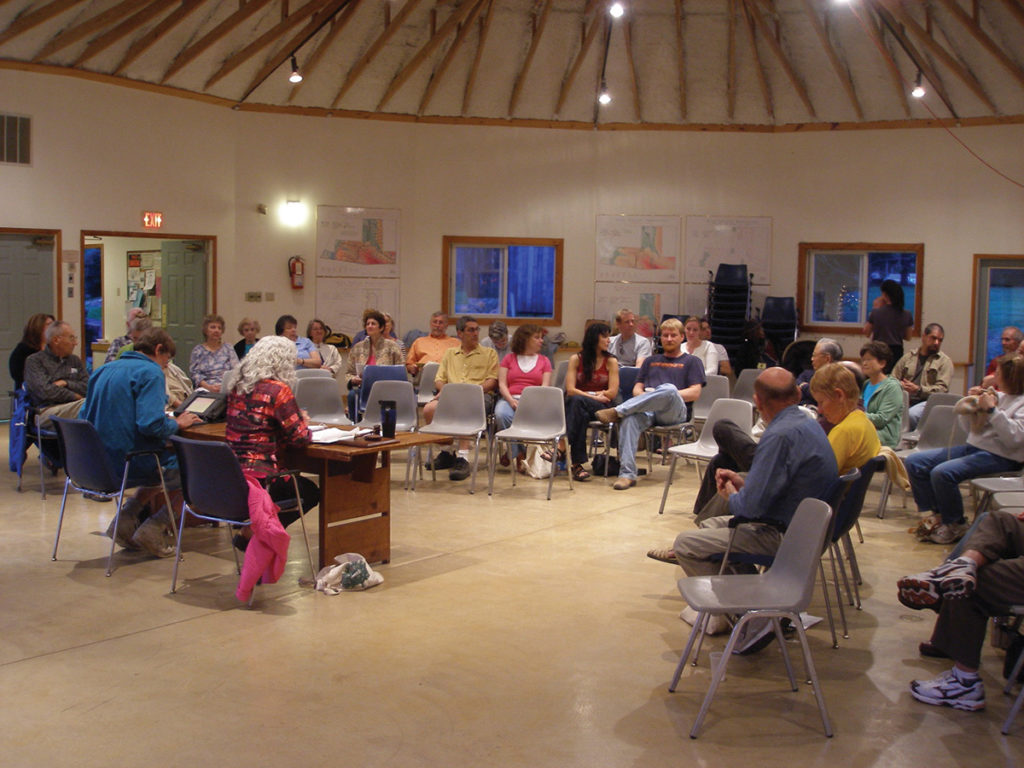
BG Homesteads meeting in the Rotunda.
Community Cohesion
Bryn Gweled comprises 240 acres, with approximately two-acre lots for each family, and about 80 acres of common land—woods, streams, and a community center. There are 75 houses, with one remaining lot not built upon.
The occupations of community members over the years have varied widely, including a good number of architects, builders, engineers, nurses, social workers, and teachers. Three of the founding members were engineers involved in the development of television at RCA’s David Sarnoff Research Center near Princeton, New Jersey.
At the very beginning, there were no People of Color, but racial diversity increased gradually during the first several decades and since then has declined, perhaps due to open housing elsewhere. Meanwhile, religious diversity has increased, as well as members with blue-collar jobs.
The BG community retains ownership of the land and offers lots to families on a 99-year lease. Families own their house and improvements to the land. Leasing rather than selling lots means that the community maintains more control than otherwise. Another influence for some founders in choosing leasing was the economic philosophy of Henry George on land use, including opposition to land speculation.
An early example of the community vision for a different future was laying underground utilities in order not to mar the beauty of the land. The founders achieved this in 1941 by persuading the phone and electric companies to put their wires below the land’s surface. When they began to explore the development of BG’s own electric plant and phone system, an unwelcome prospect to the utilities, the latter agreed to a compromise in which BG provided the ditches and the utilities laid the wire. This decision also reduced the community’s vulnerability to wind damage in storms.
In Bryn Gweled’s membership procedure, applicants meet with member families in small groups to test their fit with the expectations of community participation, such as serving on at least a couple of the approximately 25 committees. Applicants advance to approved status after obtaining a positive vote of 80 percent of members, and only then are they eligible to build or purchase a house. Without outright purchase of the land, home prices in BG are generally lower than in the surrounding community.
In BG, people know their neighbors. They join together for festivities. There is a Health and Welfare Committee that keeps track of and supports people who are ill or have special needs. Informality prevails, and adults and children alike greet each other by first names—an echo of the Friends practice of avoiding the use of titles.
For many, Bryn Gweled has been a great place for children to grow up. The Children’s Activities and Community Activities committees have provided structure. One BG offspring, Marty Paxson Grundy, wrote Growing Up with Bryn Gweled (2020), a 244-page detailed account of a BG childhood.
BG is an open community without gates and with no fences between properties, except for confining animals or excluding pests from gardens. People from the surrounding area are welcome to enjoy its natural beauty for walks or jogging.
Amenities include a spacious rotunda for community meetings and covered dish suppers (as well as family celebrations), a swimming pool, tennis courts, a soccer field, a community garden, a network of wooded trails, and a pond.
BG maintains its own roads to preserve control. To pay for them, for maintenance of the community center, and for other amenities, member families pay an assessment to BG of around $100 per month. Taxes are paid directly to the township, based on home appraisals and the value of the leased land.
Before constructing and renovating houses or making major modifications to lots, members are expected to bring proposals to the Community Planning Committee.
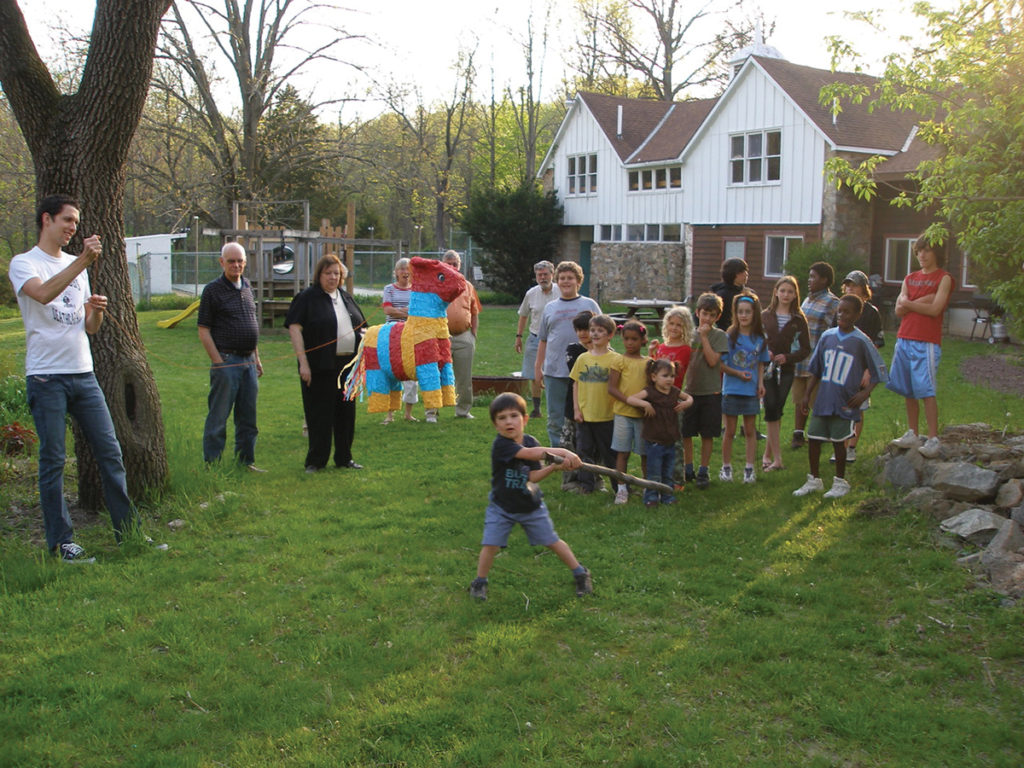
Young Bryn Gweleders at play.
Facing Outward
BGers get involved in the surrounding community. Individuals have served on the Board of Supervisors of Upper Southampton Township and on various township boards, commissions, and authorities. In the past, BG members served on the school board and were influential in improving the quality of public education in the Centennial School District. Participation in the wider Southampton community has helped to dispel early impressions of BGers as radicals.
Septic systems and sewers provide an example of the interface with local authorities. Most BG houses have their own systems. Three decades ago, when the township threatened to put in sewers, BG worked out an arrangement after a lengthy struggle and took responsibility for the proper functioning of all septic systems, which are pumped and inspected every two years. Avoiding the installation of sewers saved a huge cost to the homeowners and is seen by some as an environmentally friendly decision.
The whole BG community takes a strong interest in preventing the degradation of the environment. It has granted an easement on most of its undeveloped common land to Heritage Conservancy, a nonprofit dedicated to preserving the region’s natural and historic heritage. There are “exclosures” in the woods to keep out deer to counter the effect of grazing by their overpopulation. Their presence has also led to the creation of a community garden with a fence high enough to keep deer out.
BG has responded to Lyme disease, which is a serious threat in the area, by acquiring 4-Poster deer treatment stations. These attract deer with corn, and then, when they put their heads through the narrow openings, tickicide is applied to their necks, which is where the ticks cluster. This treatment significantly reduces the number of ticks that find their way in contact with humans. After a difficult discussion and vote on Lyme disease, the community opted to cull deer with the assistance of bow hunters.
Recycling has become a specialty in BG with a focus on difficult areas such as batteries, electronics, hazardous waste, and Styrofoam.
BG’s Martin Luther King Jr. Committee, formed shortly after his assassination in 1968, leads the community’s work against racism. Over the last 50-plus years, it has hosted a variety of educational programs and raised funds for an educational program in a village in Ghana after travel there by BG members.
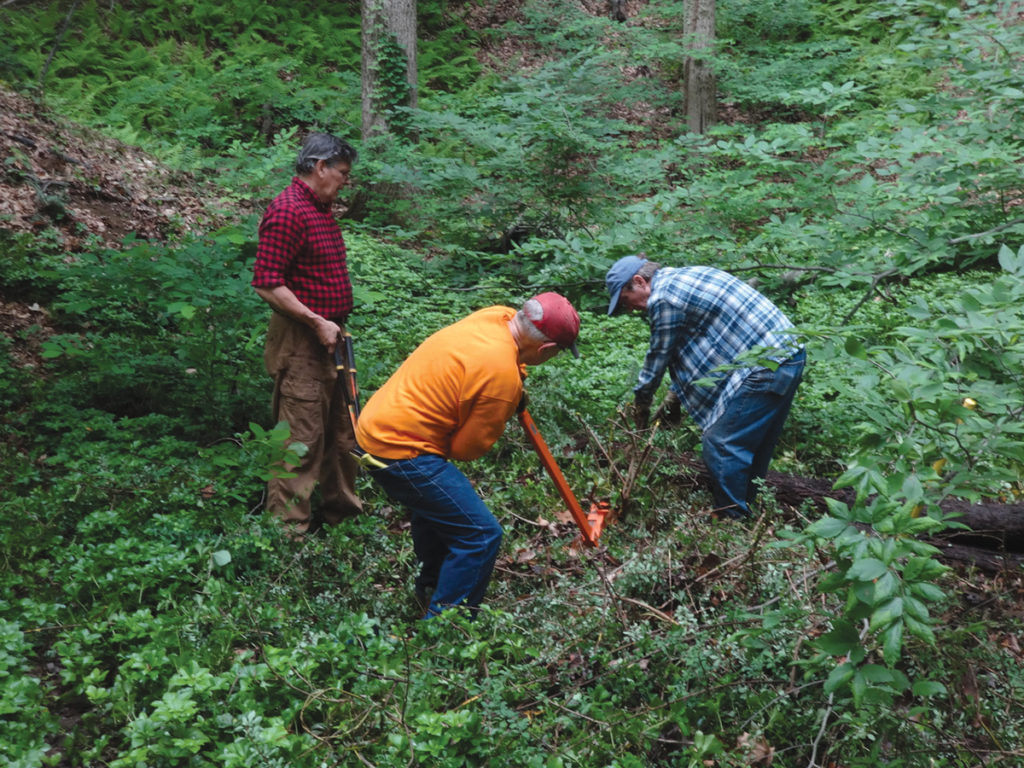
BGers use a weed wrench to conquer overgrown invasive plants on common land, 2015.
Practicalities
Governance of BG is discussed at monthly Homesteads meetings, usually held on the first Saturday evening of the month following a morning work party to take care of the physical needs of the community, and a covered dish supper for fellowship. The Board’s seven members serve for overlapping three-year terms. One board member is elected to serve as president each year for a one-year term. The Board appoints a treasurer and a finance committee as well as a few other positions; all are volunteer.
At Homesteads meetings, discussions can be intense, and the community does not shy away from allowing conflict to surface. The idea of setting up formal conflict resolution procedures has been talked about from time to time but never implemented.
For communications, BG families have special mailboxes for hard-copy community mail that stand along BG roads next to the postal mailboxes. An email listserv informs people not only about BG events and community issues but also about the experiences of their neighbors with plumbers, painters, and services in general—and not a small amount of joking. Members publish a newsletter, Bright Gems, which an 11-year-old boy founded over 65 years ago. A password-protected website supports an archive, and a public one, bryngweled.org, provides outreach.
In the age of the pandemic, BG monthly business meetings and committees gather virtually. The eightieth anniversary celebration planned for the summer of 2020 was held online. Future gatherings are planned at intervals, virtually for at least as long as required for safety.
Balance Sheet
There have been areas of challenge. One is that some members are reluctant to run for the Board because they don’t want to risk being elected president with its heavy responsibilities, or to some other elected and voluntary positions. Another is the complexity of many tasks for an all-volunteer community. A third is enabling members to attend Homesteads meetings in the age of dual-earner families. And a fourth is the overall dependence on cars for a community with spread out housing.
Former members and offspring of BG families are scattered across North America and even around the world. Some in the BG diaspora have held reunions far away.
Clearly the label “utopia” does not fit Bryn Gweled in its usual sense, but there are ways that this unique community is not just a flash in the pan and holds great promise. Could BG become a pattern for right-sized communities everywhere?
The gift that Quakerism offers to the world may be most evident in phenomena like BG—communities on the borders of the faith and not in its interior. There is something alive in this unclassifiable creation that can change, grow, and endure.


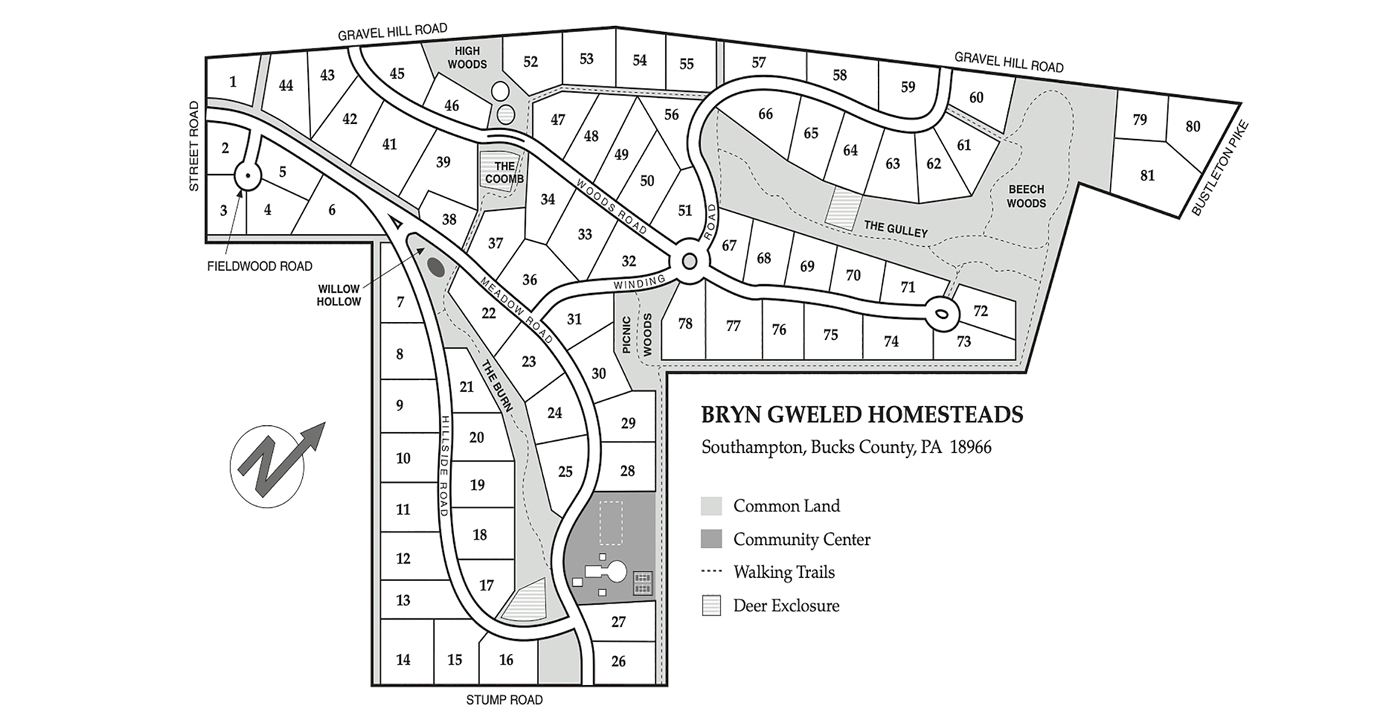
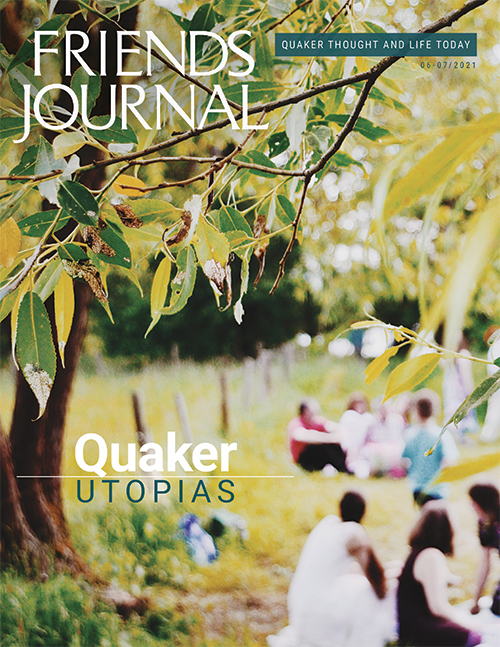
Visited this communal living arrangement years ago. Didn’t know Ffriend Robert Dockhorn was an alumnus! Thanks
Robert Dockhorn has given many pleasurable reads for our family for the
past ten years. His writings allow you to really think. New ideas as well as old
cause you to ponder past beliefs. Read
his contributions to people.
Very Interesting Article Bob. I spent my first 15 years in B.G. and felt very fortunate to be a part of such an interesting group of people.
I would be be interested in who is in the Cape May Photo. I only recognize Billy Maxfield and Ken Grundy and Marty Jo Paxson.
It was a wonderful place to spend my childhood.
Thanks, Bob, for an interesting and comprehensive overview history of our community!
My father, Ken Bergstrom, grew up at Bryn Gwelyd. I am interested in learning more about it. I know Bob and Jim, but have been out of touch for some time. I would love to connect with some people from the community, especially those who knew my dad.